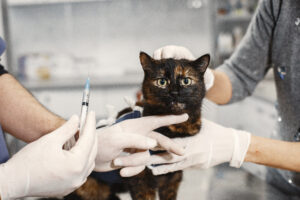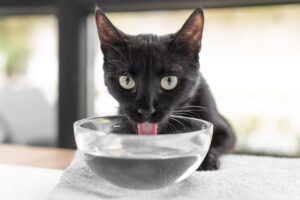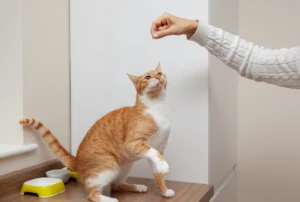Introduction
The journey to adopt a ragdoll cat can be filled with excitement and anticipation. These stunning felines, with their striking blue eyes and plush, silky coats, have captured the hearts of cat enthusiasts worldwide. However, before you begin searching for “ragdoll cats for adoption” or “ragdoll kittens near me,” there are several important realities you should understand.
In this comprehensive guide, we’ll explore five sad truths about ragdoll cats for adoption that every potential owner needs to know. From the challenges of finding ragdoll cats for adoption to understanding the complex world of ragdoll cat rescue organizations, this article will provide you with essential insights to make an informed decision about bringing one of these beautiful companions into your home.
Whether you’re searching for “ragdoll kittens available” or “affordable ragdoll kittens,” the information contained here will help you navigate the sometimes difficult process of adopting these beloved cats. Let’s delve into the realities that many prospective ragdoll owners discover only after beginning their adoption journey.
Truth #1: Pure Ragdoll Cats Rarely End Up in Regular Shelters
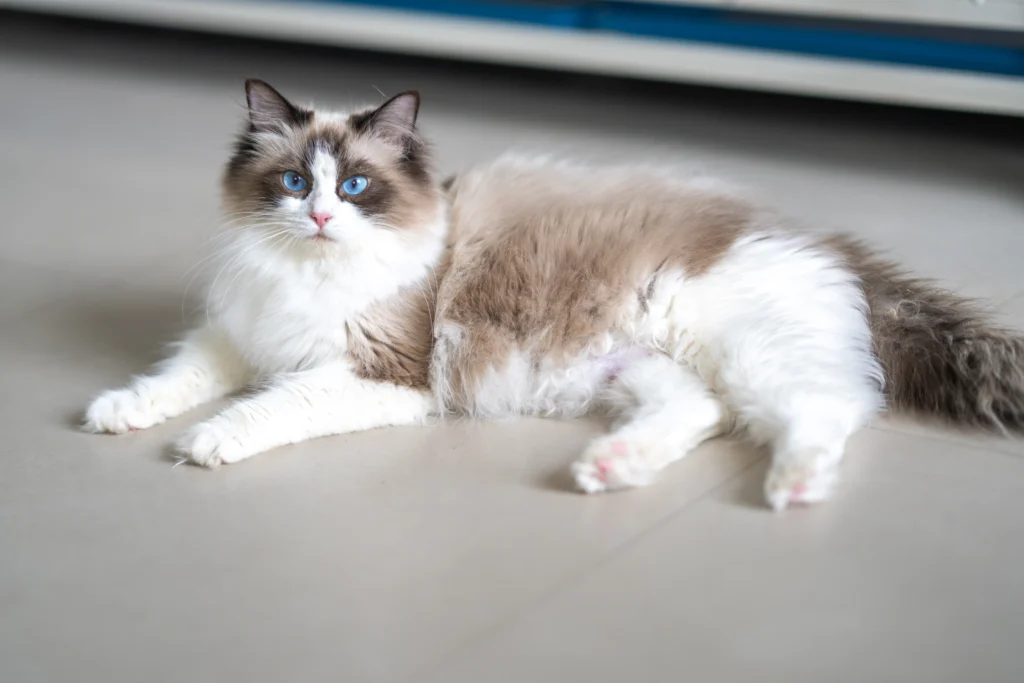
When you start searching for “ragdoll cat shelter” or “ragdoll cat adoption near me,” you might be surprised by the limited options available. The sad truth is that purebred ragdoll cats are seldom found in traditional animal shelters or general rescue organizations. There are several reasons for this phenomenon:
High Demand, Limited Supply
Ragdoll cats for adoption are in extremely high demand. As one of the most popular cat breeds in the United States, these gentle giants with their striking blue eyes and docile temperaments are highly sought after. When purebred ragdoll kittens for adoption do become available through rescue organizations, they’re often adopted within hours of being listed.
According to the Cat Fanciers’ Association (CFA), ragdolls consistently rank among the top five most popular cat breeds in America. Their popularity means that when legitimate ragdoll cats for rehoming appear, they rarely remain available for long.
Breed-Specific Rescues
Most purebred ragdoll cats that need new homes are channeled through breed-specific rescue networks rather than general shelters. Organizations like Ragdoll Rescue USA and Specialty Purebred Cat Rescue focus specifically on placing ragdoll cats for adoption with appropriate families.
These specialized rescues understand the unique needs and characteristics of ragdolls and can better match them with experienced owners. If you’re hoping to adopt a ragdoll cat, connecting with these breed-specific organizations is typically more fruitful than searching general shelters.
Breeder Contracts
Reputable ragdoll cat breeders near me and across the country often include “return clauses” in their adoption contracts. These stipulations require owners to return the cat to the breeder if they can no longer keep them, rather than surrendering them to a shelter or rehoming them independently.
This practice helps ensure that ragdoll cats for adoption are properly cared for throughout their lives and prevents purebred ragdolls from entering the shelter system. While this is beneficial for the cats, it does reduce the number of ragdolls available through traditional adoption channels.
Truth #2: The “Free Ragdoll Kittens for Adoption” Scam
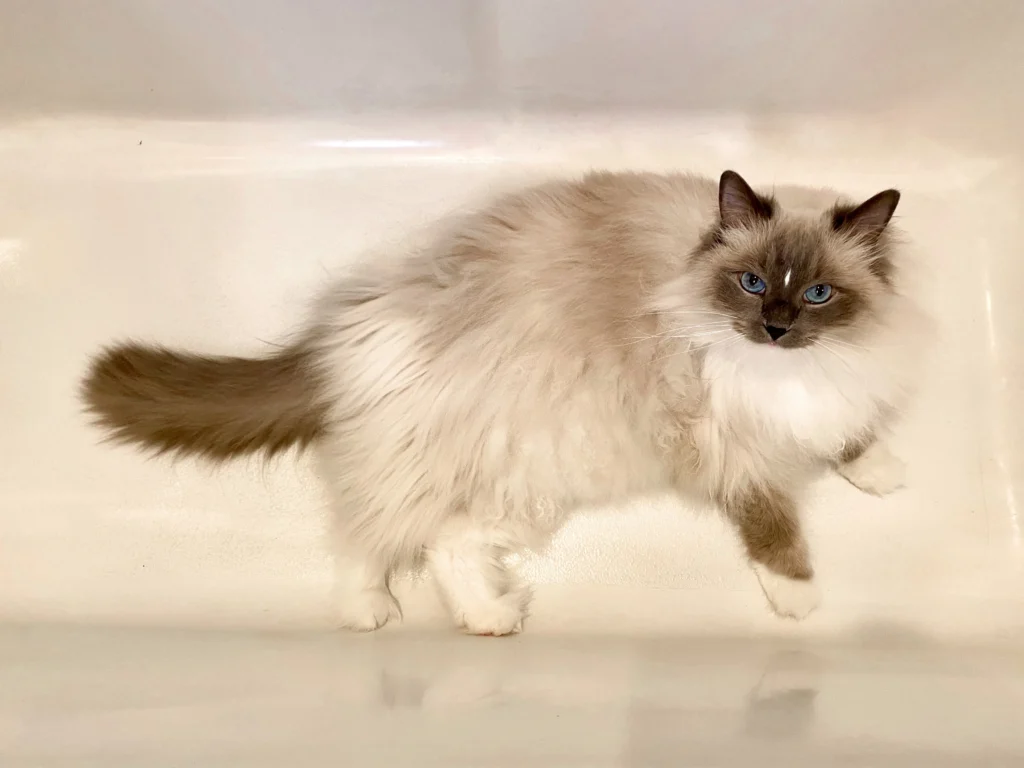
One of the most heartbreaking truths about searching for ragdoll cats for adoption is the prevalence of scams, particularly those advertising “free ragdoll kittens for adoption.” Let’s examine why these offers are almost always too good to be true:
The Reality of Ragdoll Cat Costs
Genuine ragdoll kittens are expensive to breed and raise properly. Reputable breeders invest in:
- Health testing for genetic conditions common in ragdolls
- Quality nutrition for queens (mother cats) and kittens
- Proper veterinary care including vaccinations
- Early socialization and enrichment
- Registration with cat breed associations
These costs mean that even rescue ragdoll cats typically come with adoption fees ranging from $100 to $500, depending on age and pedigree confirmation. The notion of “free ragdoll kittens” should immediately raise red flags.
Common Scam Tactics
According to the Better Business Bureau, pet adoption scams have increased by over 500% in recent years, with rare and desirable breeds like ragdolls being primary targets. When searching for ragdoll kittens available, be wary of these common scam indicators:
- Prices significantly below market value
- Sellers unwilling to video chat or meet in person
- Requests for payment via wire transfer or gift cards
- Elaborate stories about why the cat needs to be rehomed quickly
- Professional-looking photos that may be stolen from legitimate breeders’ websites
The Federal Trade Commission (FTC) reports that victims of pet adoption scams lose an average of $700 per incident. Beyond financial loss, these scams create tremendous emotional distress for hopeful pet parents.
Misrepresentation of Breed
Another common issue is the misrepresentation of cats as purebred ragdolls. Many cats advertised as “ragdoll cats for adoption” are actually domestic longhairs with similar coloring. While these cats may make wonderful pets, they won’t possess the distinctive temperament and physical traits of true ragdolls.
True ragdoll cats exhibit specific characteristics:
- Large size (males 15-20 pounds, females 10-15 pounds)
- Distinctive color points (darker ears, face, paws, and tail)
- Bright blue eyes
- Semi-longhair coat with minimal undercoat
- Docile, floppy temperament when held (the “ragdoll” trait)
If you’re determined to adopt a ragdoll cat, learning to recognize these traits or seeking verification from a breed expert can help you avoid disappointment.
Truth #3: Health Issues You Should Know Before Adopting Ragdoll Cats

While ragdoll cats are beloved for their stunning appearance and sweet temperaments, they are predisposed to certain health conditions that potential adopters should understand before bringing one home. When searching for ragdoll cats for adoption, it’s important to consider these potential health concerns and associated veterinary costs.
Hypertrophic Cardiomyopathy (HCM)
HCM is the most common heart disease in all cats, but ragdolls have a genetic predisposition to this condition. This heart muscle disease causes thickening of the heart walls, which can lead to heart failure, blood clots, and sometimes sudden death.
Research published in the Journal of Veterinary Cardiology indicates that approximately 30% of ragdoll cats may carry genetic mutations linked to HCM. When adopting a ragdoll cat, ask if the cat has been screened for this condition through echocardiogram or genetic testing.
The American Association of Feline Practitioners recommends annual cardiac evaluations for breeds predisposed to HCM, which can cost $300-500 per examination.
Polycystic Kidney Disease (PKD)
Ragdoll cats for adoption may also carry genes for PKD, a condition where fluid-filled cysts form in the kidneys, potentially leading to kidney dysfunction as the cat ages. According to Cornell University’s College of Veterinary Medicine, symptoms typically don’t appear until the cat is 7+ years old, but the disease is progressive and eventually fatal.
Genetic testing for PKD costs approximately $40-100 and should be performed before adoption if possible. Managing a ragdoll with PKD may require specialized diets, regular blood work, and medication, potentially costing $1,000-3,000 annually as the disease progresses.
Dental Issues
Many ragdoll cats are prone to dental problems including gingivitis, periodontal disease, and tooth resorption. These conditions not only cause pain but can lead to systemic health issues if bacteria enter the bloodstream.
The American Veterinary Dental College reports that by age three, most cats show signs of dental disease. For ragdoll cats for adoption, this may mean annual dental cleanings under anesthesia ($500-1,000 per procedure) and possible tooth extractions as they age.
Bladder and Urinary Issues
Ragdolls, particularly males, can be susceptible to urinary tract issues including feline lower urinary tract disease (FLUTD) and urinary blockages, which constitute medical emergencies.
The American Veterinary Medical Association estimates that 1-3% of cats experience urinary obstructions, with treatment costs ranging from $1,000-3,000 for emergency intervention. Preventative measures include special diets and increased water consumption.
When looking to adopt ragdoll cat, always inquire about the cat’s medical history and any health screenings that have been performed. Reputable rescues or breeders will be transparent about these health concerns and may provide documentation of testing.
Truth #4: The Reality of “Affordable Ragdoll Kittens”
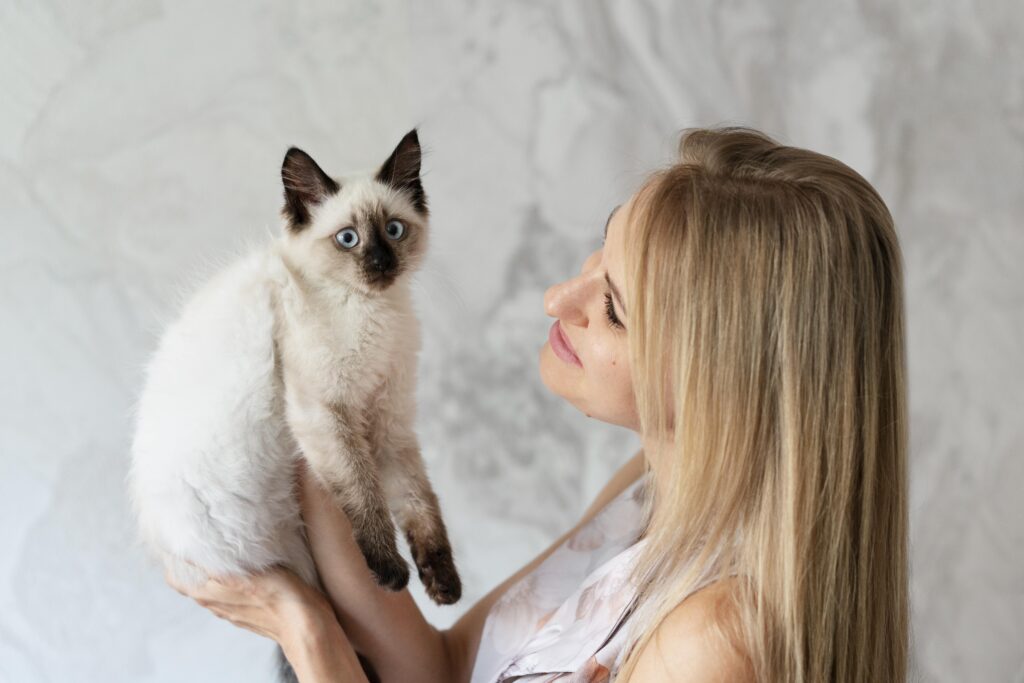
Many prospective cat owners search for “affordable ragdoll kittens” or “ragdoll kittens for sale or adoption” hoping to find a budget-friendly option. However, the fourth sad truth about ragdoll cats for adoption is that truly affordable options are extremely rare, and attempts to find budget-friendly ragdolls often lead to disappointment or worse.
The True Cost of Ragdoll Ownership
The initial adoption fee or purchase price is just the beginning of your financial commitment when you adopt a ragdoll cat. Here’s a breakdown of what you might expect to spend:
Adoption/Purchase Price:
- Ragdoll kittens from reputable breeders: $1,200-$2,500
- Adult ragdoll cats for rehoming: $400-$1,000
- Ragdoll cat rescue organizations: $150-$500
Annual Expenses:
- Premium food (recommended for breed-specific health): $500-$700
- Regular veterinary care: $200-$500
- Pet insurance: $200-$600
- Grooming supplies: $100-$300
- Litter and accessories: $200-$400
According to the American Pet Products Association, cat owners spend an average of $1,100 annually on their feline companions, with purebred cats like ragdolls often costing more due to their specific needs.
The Hidden Costs of “Bargain” Ragdolls
When you find listings for extremely affordable ragdoll kittens for adoption, there are typically three explanations:
- Misrepresentation: The cats aren’t actually purebred ragdolls but are being marketed as such. They may be domestic longhairs with similar coloring but lack the distinctive temperament and physical traits of true ragdolls.
- Health Issues: Some unethical breeders offer “discount” ragdoll cats for adoption because the kittens have known health problems or haven’t received proper veterinary care. These initial savings often translate to substantial veterinary bills later.
- Poor Breeding Practices: Cats being sold at significantly reduced prices may come from kitten mills or backyard breeders who cut corners on genetic testing, socialization, and early care. These ragdoll cats often develop behavioral or health issues that can be costly and heartbreaking.
A study by the University of California Davis Veterinary Medical Teaching Hospital found that cats from poor breeding environments were 45% more likely to develop behavioral issues and 30% more likely to have chronic health conditions compared to those from reputable sources.
The Financial Commitment of Ragdoll Rescue
Even when adopting through rescue ragdoll cats organizations, potential owners should be prepared for costs beyond the initial adoption fee:
- Medical treatments for existing conditions
- Behavioral training for cats from traumatic backgrounds
- Specialized diets for sensitivity issues
- Higher insurance premiums for older cats or those with pre-existing conditions
Legitimate rescue organizations typically disclose these potential costs upfront and may offer support resources for adopters.
Truth #5: The Challenges of Finding Legitimate Ragdoll Cat Rescues
The final sad truth about ragdoll cats for adoption concerns the challenges of finding legitimate rescue organizations specifically focused on this breed. Many people search for “ragdoll cat rescue” or “ragdoll kittens rescue near me” only to discover a confusing landscape of options.
Limited Specialized Rescue Organizations
Unlike some popular dog breeds that have numerous rescue groups across the country, there are relatively few rescue organizations exclusively dedicated to ragdoll cats. The Ragdoll Fanciers Club International (RFCI) maintains a rescue network, but their capacity is limited and waiting lists can be extensive.
According to data from Petfinder, breed-specific rescues account for less than 5% of all cat rescue organizations in the United States, with even fewer specializing in ragdolls specifically. This scarcity makes finding rescue ragdoll cats near me a challenge for many prospective adopters.
Long Waiting Periods
Due to the high demand for ragdoll cats for adoption, waiting periods at legitimate rescue organizations can be discouraging. Many approved applicants wait 6-18 months before a suitable ragdoll becomes available. This extended timeline leads some potential adopters to explore less reputable sources out of impatience.
The North American Ragdoll Society reports that approved adopters wait an average of 9 months to be matched with a rescue ragdoll. During this waiting period, it’s important to stay patient and resist the temptation of questionable online listings.
Geographical Limitations
Legitimate ragdoll cat rescue organizations often have strict geographical limitations for adoption. Many require adopters to live within a certain distance (typically 200-300 miles) of the rescue to facilitate home visits and ensure they can reclaim the cat if the adoption doesn’t work out.
This means that searching for “ragdoll cats for adoption near me” or “where to adopt ragdoll cats” in your specific area might yield very limited results if you don’t live near an active rescue operation.
Stringent Adoption Requirements
Reputable organizations that specialize in ragdoll cats for rehoming typically have rigorous adoption requirements. These may include:
- Home ownership or landlord approval documentation
- Veterinary references
- Home visits or virtual home inspections
- Previous experience with the breed
- Agreement to keep the cat indoors only
- No declawing policies
- Age restrictions for homes with young children
While these requirements are designed to ensure good matches and prevent future surrenders, they can be barriers for some potential adopters.
Navigating Mixed-Breed Adoption
Many cats in shelters and general rescues are listed as “ragdoll mixes” based on appearance alone, without genetic confirmation. While these cats may share some physical traits with purebred ragdoll cats, they might not possess the distinctive temperament that makes ragdolls so beloved.
The International Cat Association (TICA) acknowledges that visual identification of cat breeds is notoriously unreliable. If specific breed traits are important to you, working with breed-specific rescues or reputable breeders who occasionally rehome adult cats may be a more reliable route.
What to Do If You’re Serious About Adopting a Ragdoll Cat
Despite these challenges, there are pathways to successfully adopt ragdoll cat if you’re willing to be patient and diligent. Here are some suggestions:
Connect with Breed-Specific Resources
Start by reaching out to these reputable organizations focused on ragdoll cats for adoption:
These organizations can add you to their waiting lists and provide education about the breed while you wait.
Consider Adult Ragdolls
While many people search specifically for “ragdoll kittens available,” consider opening your heart to adult ragdoll cats for rehoming. Adult cats typically have established personalities, making it easier to find one that matches your lifestyle. Additionally, wait times for adult ragdolls are often shorter than for kittens.
Research shows that adult cats adapt well to new homes despite common misconceptions about bonding. The Journal of Veterinary Behavior published a study indicating that cats over two years old formed equally strong bonds with new owners compared to kittens.
Expand Your Search Radius
If there are no options to adopt ragdoll cat in your immediate area, consider expanding your search radius. Some rescues will work with adopters from further away if they demonstrate serious commitment, including willingness to travel for meet-and-greets and adoption finalization.
Connect with Reputable Breeders
Ethical ragdoll cat breeders near me and throughout the country occasionally have adult cats available for adoption when they retire breeding cats or when previously placed kittens need new homes due to unforeseen circumstances.
These “rehomed” cats are typically offered at reduced prices compared to kittens and are often already spayed/neutered and fully health-tested. The Cat Fanciers’ Association (CFA) and The International Cat Association (TICA) maintain breeder directories that can help you identify reputable breeders who occasionally have adult cats available.
Consider Similar Breeds or Mixes
If your heart is set on the ragdoll personality but you’re flexible about perfect breed standards, consider cats with similar traits:
- Birman cats (often called “sacred cats of Burma”)
- Ragamuffin cats (developed from ragdoll lines)
- Himalayan cats
- Domestic longhairs with gentle temperaments
These alternatives often have shorter waiting periods and lower adoption fees while still providing many of the characteristics that draw people to ragdoll cats for adoption.
Conclusion
The journey to adopt a ragdoll cat comes with significant challenges, from scarcity in shelters to potential health concerns and the prevalence of scams. However, with patience, education, and a commitment to ethical adoption practices, finding the perfect ragdoll companion is possible.
Remember that the ultimate goal of adoption is to provide a loving home to a cat in need, whether they’re a purebred ragdoll or a wonderful mixed-breed cat with similar traits. By understanding these five sad truths about ragdoll cats for adoption, you’re better equipped to navigate the complex landscape of cat adoption and make choices that benefit both you and your future feline friend.
If you’re determined to find ragdoll cats for adoption, maintain realistic expectations about timeline, cost, and availability. Connect with legitimate rescue organizations, be prepared to wait for the right match, and always prioritize the welfare of the cat above all else.
For more information about adopting cats and providing excellent care for your feline companions, explore our other articles on cat adoption and breed-specific care.
Resources for Ragdoll Cat Adoption
- American Association of Feline Practitioners
- The Cat Fanciers’ Association
- The International Cat Association
- Cornell University College of Veterinary Medicine
- Ragdoll Fanciers Club International
- Specialty Purebred Cat Rescue
- PetFinder
- Adopt a Pet
Remember that adopting a ragdoll cat is a long-term commitment, with these beautiful companions often living 12-16 years or longer with proper care. The time invested in finding a legitimate adoption opportunity will be rewarded with years of companionship from these gentle, affectionate cats.



